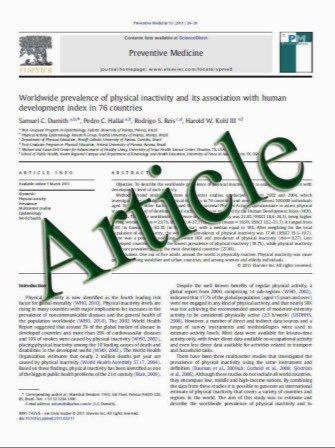Comprehensive genetic characterization of hereditary breast/ ovarian cancer families from Slovakia
- نوع فایل : کتاب
- زبان : انگلیسی
- مؤلف : Michal Konecny Miriam Milly Katarina Zavodna Eva Weismanova Jaroslava Gregorova Iveta Mlkva Denisa Ilencikova Juraj Kausitz Zdena Bart
- چاپ و سال / کشور: 2011
Description
Germline mutations in the BRCA1/2 genes account for the majority of hereditary breast ovarian cancer (HBOC). Identification of causal mutations may have significant impact on clinical management of such families. Despite high mutation detection rate, many HBOC cases remain without identified cause. These cases warrant use of several analysis methods, such as those for large genomic rearrangements and DNA copy number changes, or analysis other genes, shown to be associated with increased HBOC risk. We assessed 585 Slovak HBOC for the presence of mutations in BRCA genes. Sequencing revealed mutations in 100 families, representing 17.1% (88 and 12% of mutations were located in BRCA1 and BRCA2, respectively). Four of the mutations, c.80?4del4, c.1938_1947del10 and c.1166delG in BRCA1 and c.6589delA in BRCA2 gene have been described only in Slovak population. Using MLPA analysis, we detected two large genomic rearrangements in three families, a deletion of exons 21 and 22, and a rare deletion of a whole BRCA1 gene. Twenty-seven different variants of uncertain clinical effect (four novel) and 14 distinct SNP BRCA1 haplotypes were detected. Their potential effect was considered using the prediction software packages Align-GVGD, Pmut and Polyphen. We observed that the best clinical criterion for the initiation of BRCA1 analysis is the presence of breast cancer at 40 years of age in the association with the presence of ovarian cancer diagnosed around the age of 50. Conversely, the best clinical criterion for starting with BRCA2 analysis is the presence of breast cancer diagnosed in older age (above 50), or the presence of breast cancer in conjunction with carcinomas at different sites e.g., prostate, colorectum, ovary and uterus. Finally we have seen that the analyses of other HBOC risk gene TP53 and specific mutation in CHEK2*c.1100delC in Slovak HBOC families were not efficient since no mutations were found in these genes.
Breast Cancer Res Treat (2011) 126:119–130 DOI 10.1007/s10549-010-1325-x Received: 17 September 2010 / Accepted: 20 December 2010 / Published online: 4 January 2011 Springer Science+Business Media, LLC. 2011


